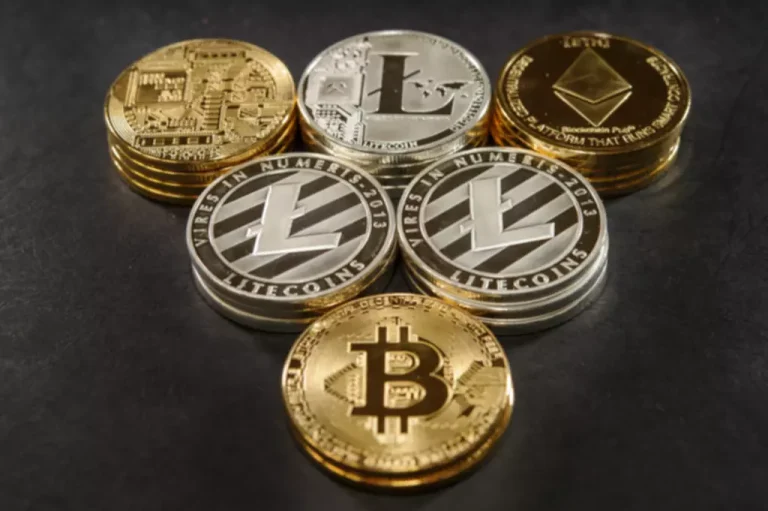

But due to impermanent loss, liquidity provision is sometimes less profitable. This means the identical assets can have different market costs; hence, withdrawing them from the pool may deliver you losses. However, by refusing to money out your funds – with a view of waiting for them to regain their preliminary price – you may hinder your capacity to explore different lucrative alternatives. Meanwhile, market makers on order e-book exchanges can control exactly the price points at which they need to buy and promote tokens. This results in very high capital effectivity, but with the trade-off of requiring active participation and oversight of liquidity provisioning.
Some AMM models incorporate mechanisms for optimizing capital allocation, similar to concentrated liquidity. This allows liquidity providers to allocate their funds within particular price ranges, maximizing their capital effectivity and potential returns on investment. In traditional systems, belongings may be illiquid or not frequently traded, resulting in outdated or inaccurate pricing. AMMs continuously regulate prices primarily based on supply and demand dynamics through their algorithmic design, offering extra current and honest market costs. An various way to achieve greater capital efficiency is to make use of digital reserves, an idea first introduced by KyberSwap [14].
Another application of automated market makers could be to make use of the platform for incentivizing liquidity suppliers. The market maker protocol works as a standard buying and selling interface, with every transaction incurring some kind of trading charge. AMMs have a built-in buying and amms meaning selling fee-sharing schedule with the liquidity suppliers, which keeps them interested and incentivized. These are automated market makers with none precise belongings in pools. One such example would be Perpetual Protocol, the place event outcomes are traded.
On the opposite hand, the impermanent loss doesn’t do appropriate justice for its name. Impermanence basically implies that when assets revert to the prices at which they had been deposited initially, person losses are decreased. On the other hand, withdrawing your funds at a worth ratio completely different from the one at which you deposited them might result in more everlasting losses. While trading fees might play a supporting role in mitigating the losses, the danger of impermanent loss can be important. In order to develop an understanding of the AMM crypto connection, you have to learn about conventional market makers. Market makers, in the case of conventional markets such as those for gold, oil, or stocks, provide liquidity to allow traders to sell or purchase assets that are close to a publicly listed worth.
In the occasion of a large margin of change within the ratio, you want to worry about unreasonably high ranges of slippage. For example, liquidity suppliers in Uniswap must deposit the equivalent value of two tokens within the ETH/DAI pool. Therefore, it is clearly evident that any particular person could turn into a market maker by adding funds to a liquidity pool. The automated market maker protocol determines the rewards for the liquidity providers.
Liquidity suppliers can earn a sure share of charges from the trades occurring in their pool for offering liquidity in the automated market maker algorithm. As a matter of truth, liquidity suppliers are one of the most necessary elements in solutions to “How do automated market makers work? Automated Market Makers redefine the panorama of buying and selling and finance.
These middlemen purchase the produce from farmers in bulk, run the intermediate processes, factor in their revenue, and promote it to end shoppers such as you and me. Now, suppose you’re a consumer who wants to purchase some greens to be used. In this case, let’s consider a traditional methodology of buying and promoting the farm produce. Want to get an in-depth understanding of crypto fundamentals, buying and selling and investing strategies?
You can think of these sorts of trades as peer-to-peer (P2P) transactions between buyers and sellers. However, DEXs that execute transactions utilizing AMMs are successfully peer-to-contract (P2C) transactions. These transactions occur with out traditional order books or counterparties. Instead, buyers and sellers interact immediately through sensible contracts. Algorithms decide the foundations for AMMs, and asset prices rely on a mathematical formulation. Though these formulas differ between protocols, the formula utilized by Uniswap is a wonderful example of how many AMMs work.
These tokens symbolize their share of the pool and could be redeemed later for his or her portion of the pool plus any accrued fees. Despite these challenges, some DeFi platforms are exploring bridges between nationwide foreign money and crypto by collaborating with regulated entities to supply fiat gateways. These gateways convert nationwide forex to a stablecoin or a tokenized version of the fiat, which might then be utilized in AMM protocols.

An Automated Market Maker (AMM) is the underlying protocol that powers some forms of decentralized change (DEX). Basically, an AMM system creates a market digitally, by generating algorithmically controlled liquidity pools to facilitate trades for customers. Even though buying and selling on AMMs and decentralized exchanges can be enjoyable and consistent with the ethos of decentralization, even on-exchange buying and selling comes with its share of benefits. These include better liquidity at occasions for the extra elusive tokens, a regulated buying and selling mechanism, fewer possibilities of sensible contract hacks, and more. Plus, this kind of buying and selling doesn’t render the market volatile in case some massive orders undergo.
These pools are funded by customers who deposit their tokens into a wise contract. In return, they receive liquidity tokens, which represent their share of the pool. Slippage is the difference between the expected price of a commerce and the precise price following the execution of the trade. This typically happens when traders place massive orders on illiquid property. When a dealer locations a big buy order on an illiquid token, the worth can increase dramatically. Naturally, the same might happen in reverse when a trader executes a large promote order, pushing the price down.

A dialogue with an automated market maker defined properly would remain incomplete without an overview of in style AMM protocols. Here is an overview of a few of the notable automated market maker protocols you would find today. With a bigger variation, you are more doubtless to incur a a lot bigger impermanent loss. Therefore, Automated Market Makers typically work effectively for token pairs that have identical values, similar to wrapped tokens or stablecoins.
This is the place prices on AMMs can differ from the more fastened ones trading on exchanges. An automated market maker doesn’t rely upon buy-sell orders like a standard order book-led change. A set of those swimming pools make an automatic market maker, with each pool crammed with a variety of tokens for facilitating trades. The variety of tokens in a given pool determines the value of the trade.
The bid-ask spread is the difference between the highest value a buyer needs to pay and the lowest price a seller will accept. This technique typically entails complex strategies and might require a lot of resources to take care of long-term. In AMM platforms, transactions are transparent and broadcasted to the community before being confirmed. This transparency could be exploited via ‘front-running,’ where an individual sees a pending transaction and pays a better gas payment to get their transaction included in the blockchain first. Additionally, ‘slippage’ refers again to the distinction between the expected price of a trade and the executed worth. In extremely unstable markets or pools with low liquidity, slippage could be important, resulting in unfavorable execution costs.
The Balancer AMM makes use of a Constant Mean Market Maker (CMMM) model, which enables liquidity swimming pools to hold as a lot as eight property. AMMs are greater than just a part of the DeFi ecosystem; they’re a transformative drive in the monetary sector. By enabling decentralized buying and selling, lending, and borrowing, and by integrating with other DeFi protocols, AMMs are paving the way for a brand new monetary paradigm. As the DeFi area continues to evolve, it’s anticipated that AMMs will play an even more important role in shaping the future of finance. AMMs have played a big function within the DeFi (Decentralized Finance) space, and their reputation may proceed to grow. They could expand to help more assets, supply new features, and combine with other DeFi protocols, contributing to the ongoing decentralization and innovation throughout the cryptocurrency ecosystem.